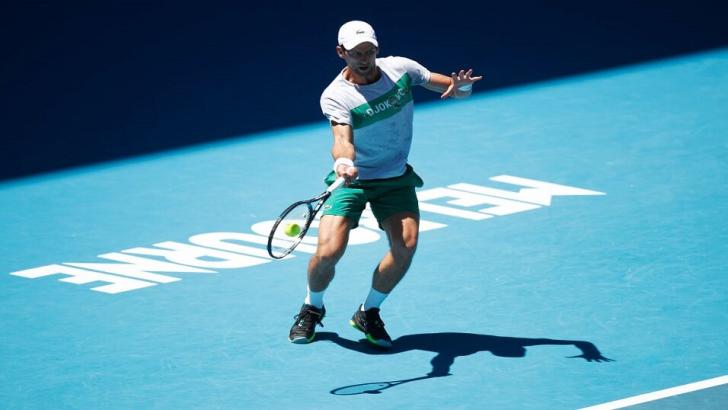Australian Open: Back Sinner at near 8/1 for Australian Open redemption

Punters instinctively know that a tournament draw is important, writes Jack Houghton, but unless you delve into the mechanics of it, it's hard to know how important...
-
Australian Open draw will dramatically affect likely winner
-
Novak Djokovic (2.1211/10) the rightful favourite
-
Draw has been kind to Jannik Sinner (8.415/2), who is the value bet
Quiz time
Question for you. How important is the draw in a tennis tournament?
If you answered, "It depends on the draw", well done. Straight to the top of the class.
If you said, "Very important", not bad either.
Any other answer given? Poor show. There's no hope for you.
The importance of the draw
I wonder, though, how many punters genuinely understand how central the draw is in determining the likely lifter of a trophy. Because unless you run your own tournament simulations, you never get to see the dramatic impact that the presence or absence of a player or two in different parts of the draw can have.
Little to choose between favourites
Take this year's Australian Open.
On the bare ratings, there is little between the favourites. Novak Djokovic (2.1211/10), Jannik Sinner (8.415/2), Carlos Alcaraz (5.04/1) and Daniil Medvedev (12.523/2) are all within 100 points of each other on my Elo ratings.
To put that in betting terms, it means that, head-to-head, no player in that quartet would start at shorter than 1.68/13 if playing one of the other three.
When those players get seeded and then randomly assigned to different parts of a tournament draw, though, strange things happen.
Let me explain.
Simulating the Australian Open
Like many punters who produce their own tennis ratings, I use Monte Carlo simulations to convert those raw ratings into usable betting odds. It's a recognised statistical tool often used in physics, and it's the only reliable way I've found to be able to take account of tournament draws.
The process involves creating a dummy tournament in a spreadsheet and using a random number generator to provide the outcome of simulated matches. This allows you to quickly run tens of thousands of imaginary tournaments, each providing a winner. By totalling up the number of times each player wins a tournament, it's easy to produce a percentage chance of them doing so in the real world.
It sounds complicated. When starting out, I had to glean guidance from obscure statistics manuals and bought a dodgy-feeling randomiser widget off a bloke in a forum. These days, tutorials are available online and there are workarounds in spreadsheet packages that allow you to run multiple simulations in one click.
If you are relatively handy with a spreadsheet, I recommend taking a few hours to create your own. The same spreadsheet can be easily reused, and by getting stuck into the inner workings of a tournament - watching how the mechanics of a draw dramatically affects the likelihood of a player progressing or crashing out - you will gain a level of insight into tennis tournament betting that few punters have.
How the betting changes
Going back to this year's Australian Open, we can see how the statistical fate of those largely-equally-matched players change when their raw ratings are plugged into the simulation. The table shows the odds available on the exchange at the time of writing, followed by the true odds (in brackets) of each player generated by the simulation,
Novak Djokovic 2.1211/10, (2.915/8)
Carlos Alcaraz 5.04/1, (7.87/1)
Jannik Sinner 8.415/2, (3.211/5)
Daniil Medvedev 12.5, (9.89/1)
Alexander Zverev 34.033/1, (30.029/1)
Grigor Dimitrov 42.041/1, (53.0)
Andrey Rublev 70.069/1, (48.047/1)
Sinner, Medvedev and Rublev the value ahead of Djokovic
If taking these ratings and the subsequent simulations on face value, Sinner, Medvedev and Rublev all look like attractive bets.
As with any statistical method, though, it's important to add a little human intelligence.
Djokovic has changed his scheduling and style of play in recent years, meaning that he routinely outperforms his raw rating when competing in the Majors. It's right, then, that the market favours him here. He might be 37, but the winner of 10 Australian Opens, 24 Majors, including three last season, is certainly the most likely to lift the trophy in Melbourne.
Despite this, Djokovic's odds are too short at 2.1211/10. He's the most likely winner - certainly - but as we saw at Wimbledon last year, he is no longer invulnerable, and the likes of Jannik Sinner, who beat Djokovic twice at the end of last season and is likely to meet him in the semi-finals in Melbourne, will no longer feel overwhelmed by the prospect of facing the Serb.
Sinner the bet at 8.415/2
Real-life tournaments are not played tens of thousands of times, and the outcomes are not guided by random number generators. Pressure and experience counts for a lot. But those punters who keep taking even-money on Djokovic winning Majors will likely lose in the medium-term, which is why I am heavily backing Jannik Sinner at 8.415/2 to benefit from the draw here.
Now read more Aussie Open tips and previews here.
Recommended bets
GET £50 IN FREE BETS MULTIPLES WHEN YOU SPEND £10 ON THE BETFAIR SPORTSBOOK
New customers only. Bet £10 on the Betfair Sportsbook at odds of min EVS (2.0) and receive £50 in FREE Bet Builders, Accumulators or Multiples to use on any sport. T&Cs apply.
Prices quoted in copy are correct at time of publication but liable to change.

